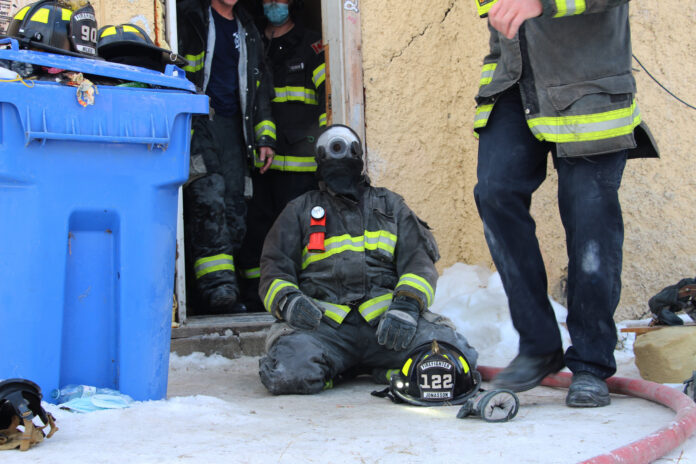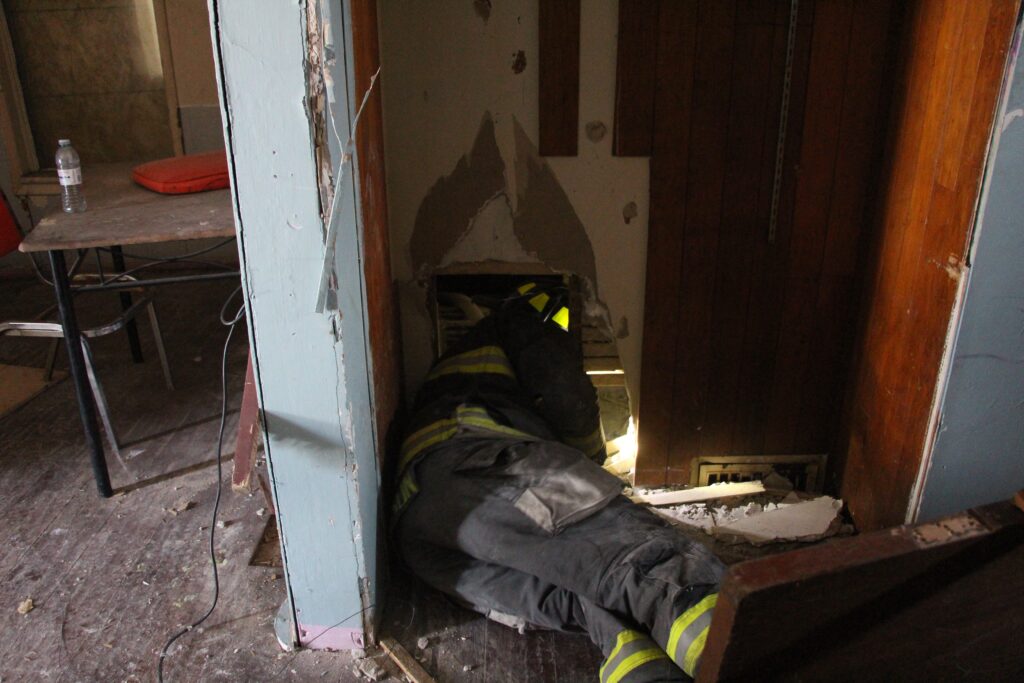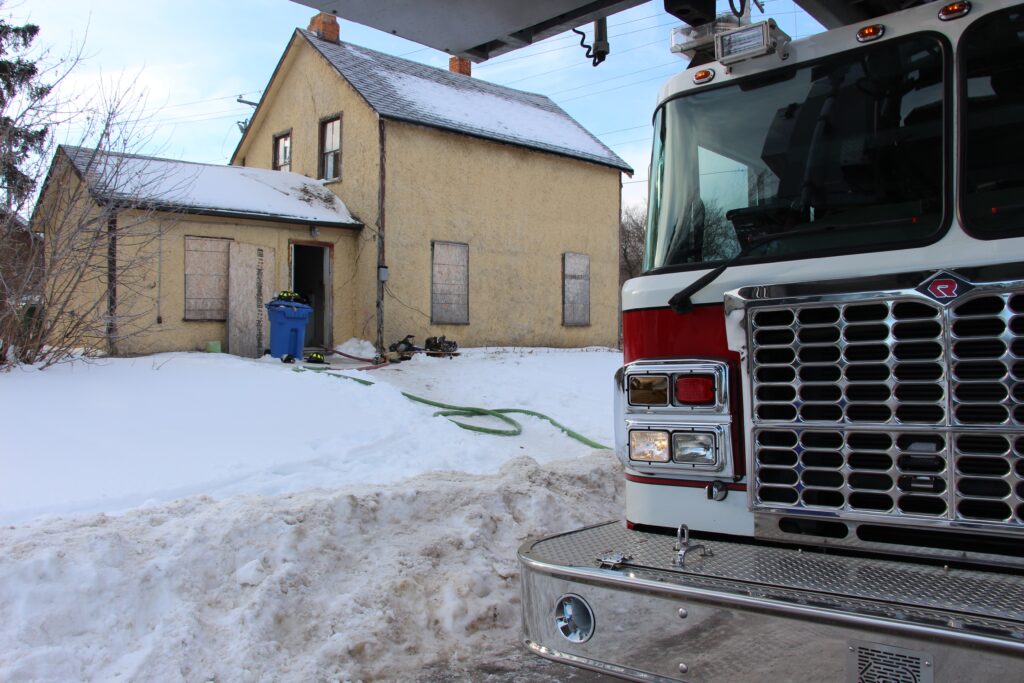
Members of the Prince Albert Fire Department (PAFD) took part in a special type of training that helps them prepare for calls that don’t go well.
Darcy Rusk, battalion chief with the department is an instructor for the course which was brought to PAFD about a year ago.
Firefighters have their face masks blacked out so they can’t see anything and have to navigate themselves out of the house. The house used for this training is two storeys and trainees had to start upstairs.
When firefighters enter burning buildings, there’s a lot of smoke, heat and even flames. Rusk said in bad fires you wouldn’t even be able to see a hand in front of your face. This is why firefighters going through the training course have their face masks blacked out.
Another challenge is that they’re entering buildings they’ve never been in before so they’re unaware of where everything is.
“If you close your eyes in your house you still know your way around pretty well. You can find your way out but if you came into my house with your eyes closed it would be pretty tough, and that’s the situation that we’re in.”
As firefighters go into buildings, they have a hand on the hose line which helps them figure out which direction the exit is since the hose is attached to the truck outside. But sometimes firefighters can lose the hose, which is the situation posed in Fire Ground Survival training.
“They have to find the hose line and then they have to follow it and then figure out which direction they’re going so they can find their way out,” Rusk said.
“If we follow a hose line we can actually follow it right back to the truck which is exactly what we’re doing in this scenario.”
The hose lines have couplings on them, which feel different and can help firefighters determine what directions they’re going in.
The house used for training is set up with all sorts of obstacles that firefighters may encounter in buildings, such as disarrayed furniture, broken walls and doors, and exposed wires.

Exposed wires pose a more difficult challenge for firefighters to navigate.
“They generally get tangled up behind you so you can’t see them. Sometimes you can’t reach them or feel them, so it’s definitely one of the more difficult scenarios.”
Rusk added the firefighters can use wire cutters to try and free themselves.
Another challenge, on top of visibility and obstacles, is oxygen levels.
“Stress raises your heart rate, which makes you breathe faster and will definitely make you go through a bottle of air a lot quicker so you really do have to calm yourself down and relax yourself in a stressful situation,” Rusk said.
Patrick Clarke, an acting captain with the PAFD has been through the course a few times and said it’s extremely difficult.
“It pushes you to a place where you hope you never actually have to go to at a real call … it makes you realize how important conditioning is because your brain doesn’t work if you don’t have oxygen,” Clarke said.
Rusk said while these situations aren’t very common because the department trains to make sure things go well during a call, it’s still beneficial to train for them.
“This is for when something happens, something goes wrong and then the training that we’re doing today is what probably you’re going to rely on to save yourself so that you can actually get out of that structure and get back to your family.”
When a call goes wrong it may be if the crew missed something or something happens that they weren’t expecting.
Rusk added a lot of newer houses are built from what’s called ‘lightweight construction,’ and firefighters are finding that they collapse a little more quickly. For example, firefighters can fall into a basement. Rusk says this is when firefighters would have to turn to their skills from training to get out of the situation.
The house that training took place in on Thursday is set to be demolished so the owner allowed the fire department to use it for training and courses.

Rusk said every firefighter who finds their way out of the house completes the course and receives Fire Ground Survival certification. Rusk has never seen a firefighter not find their way out. If someone didn’t pass the course, it would be because they got too overwhelmed and gave up.
“They’re all getting pretty close to their limits. They all come out with new appreciation for the situations that we didn’t find ourselves in. They’re all pushed pretty close to their breaking point I think.”

